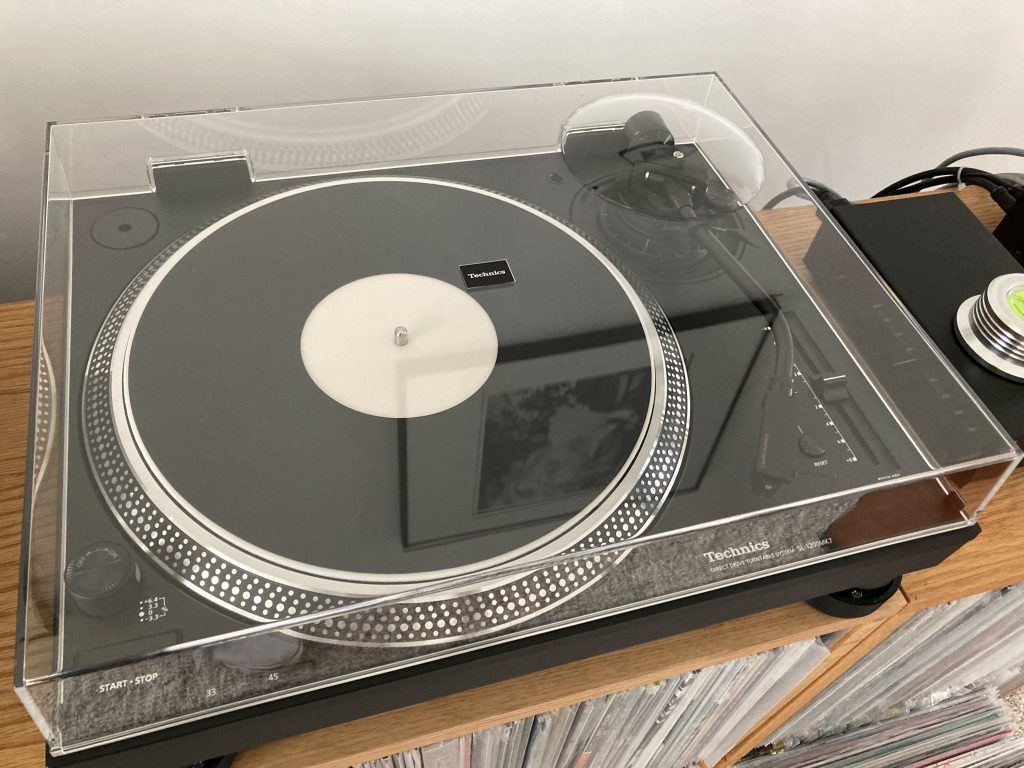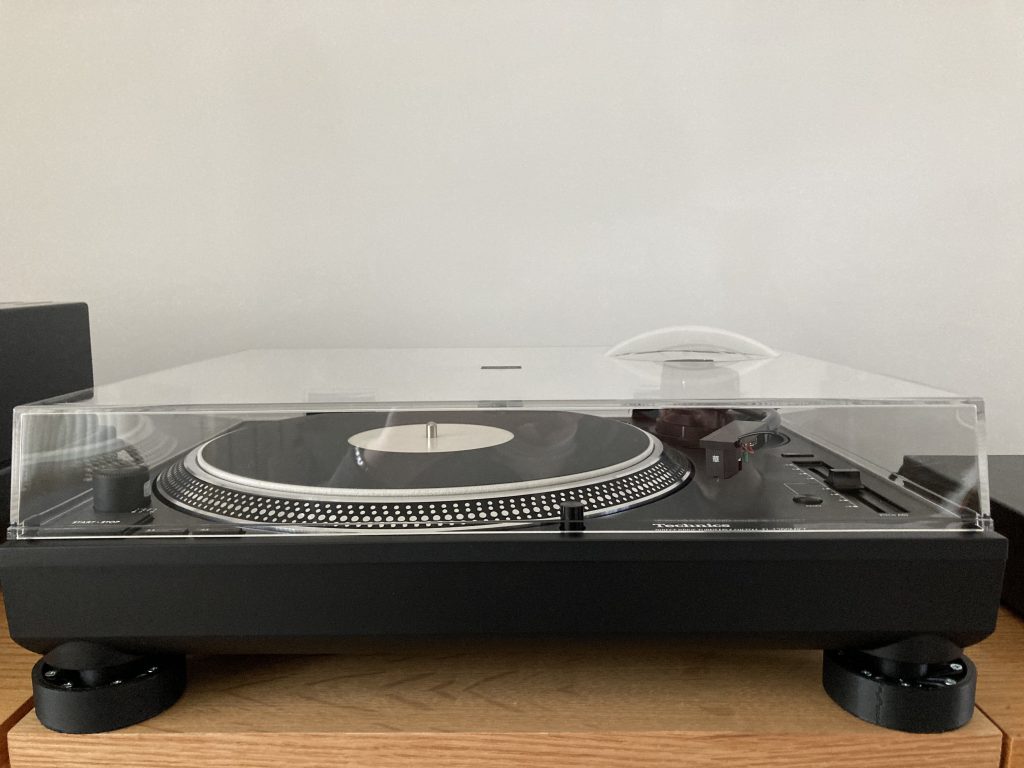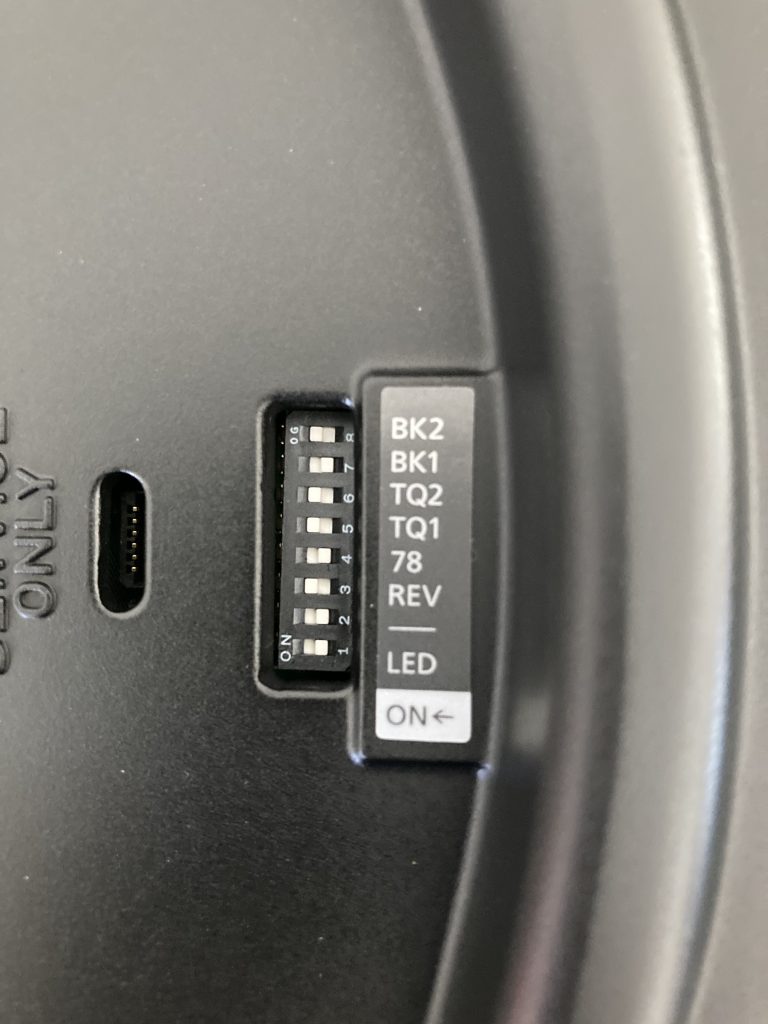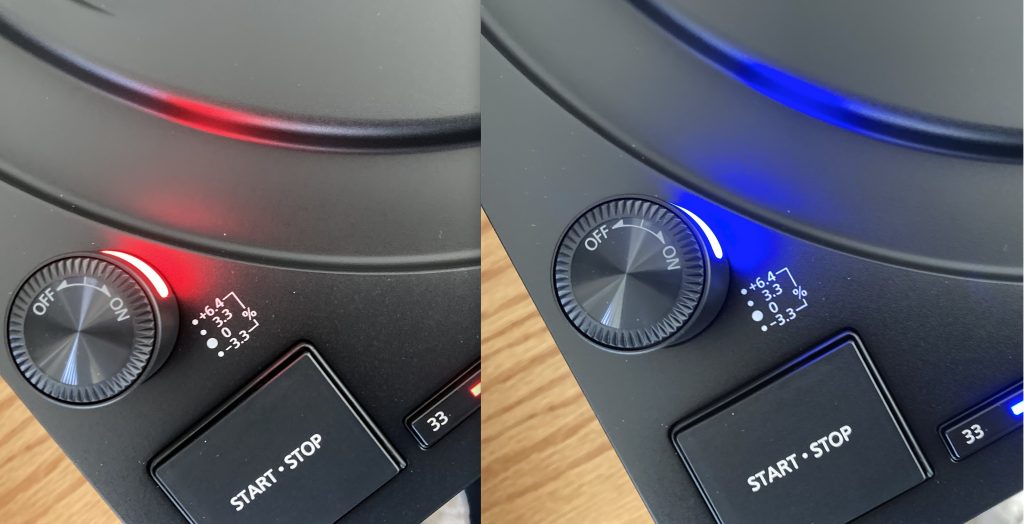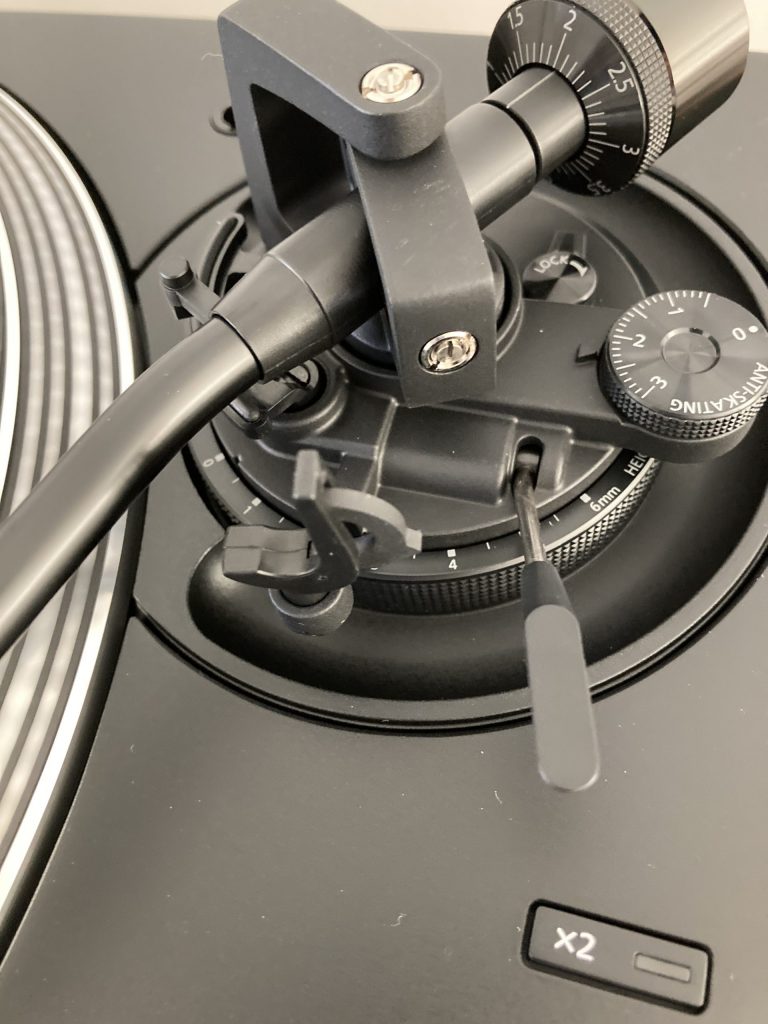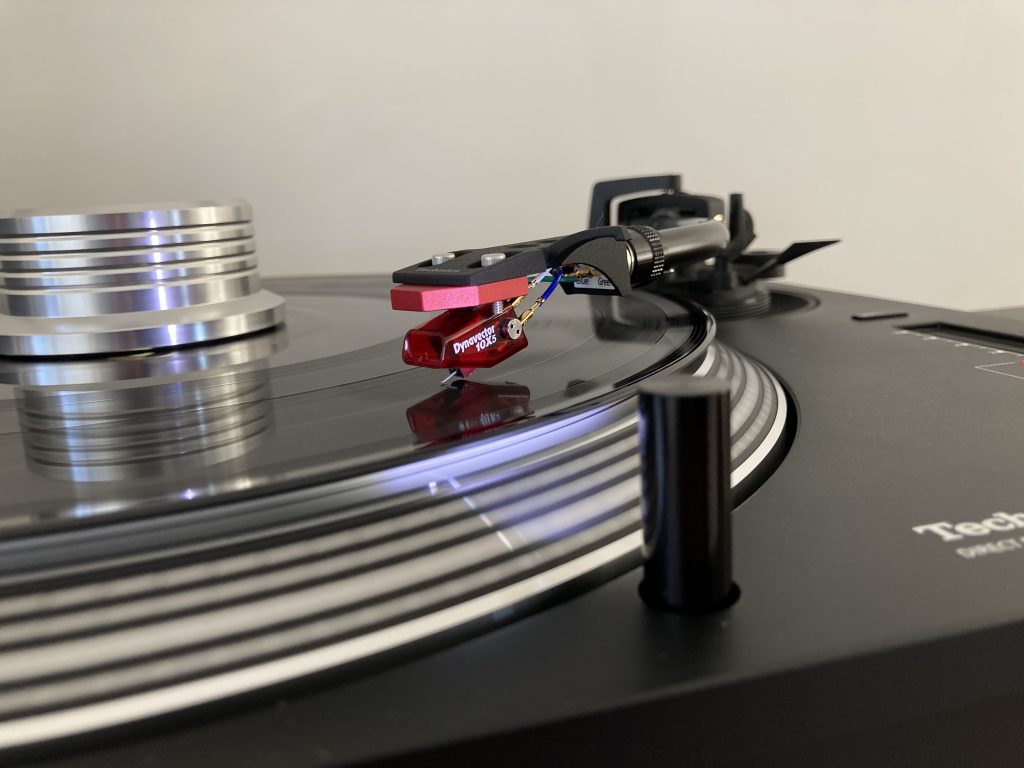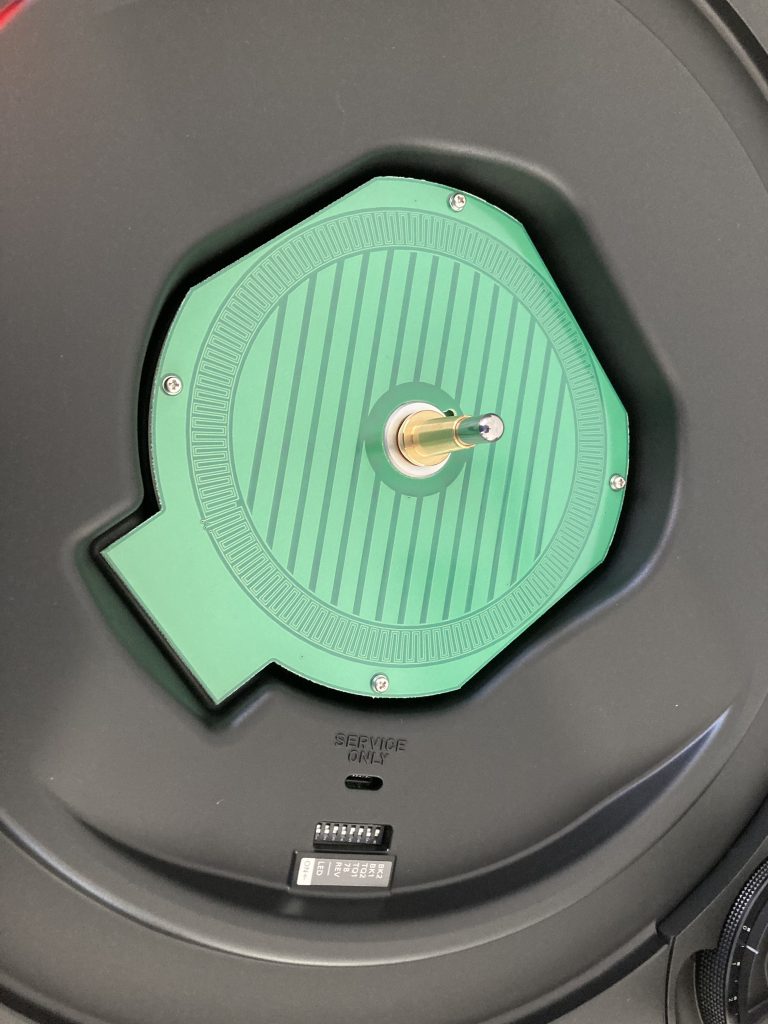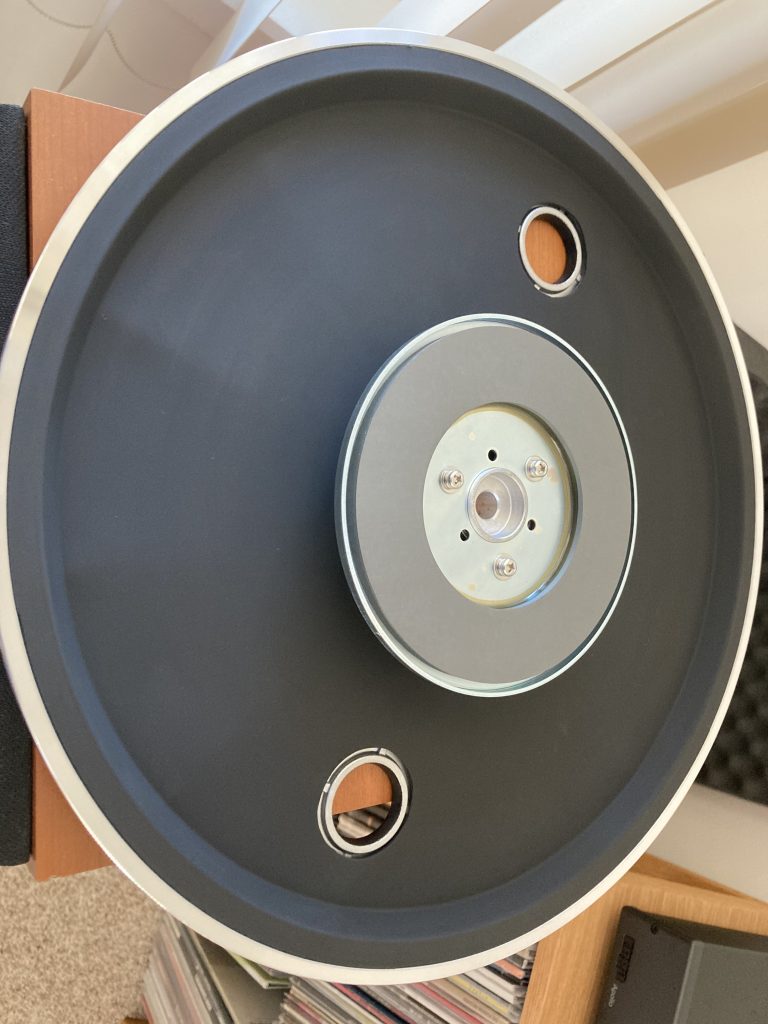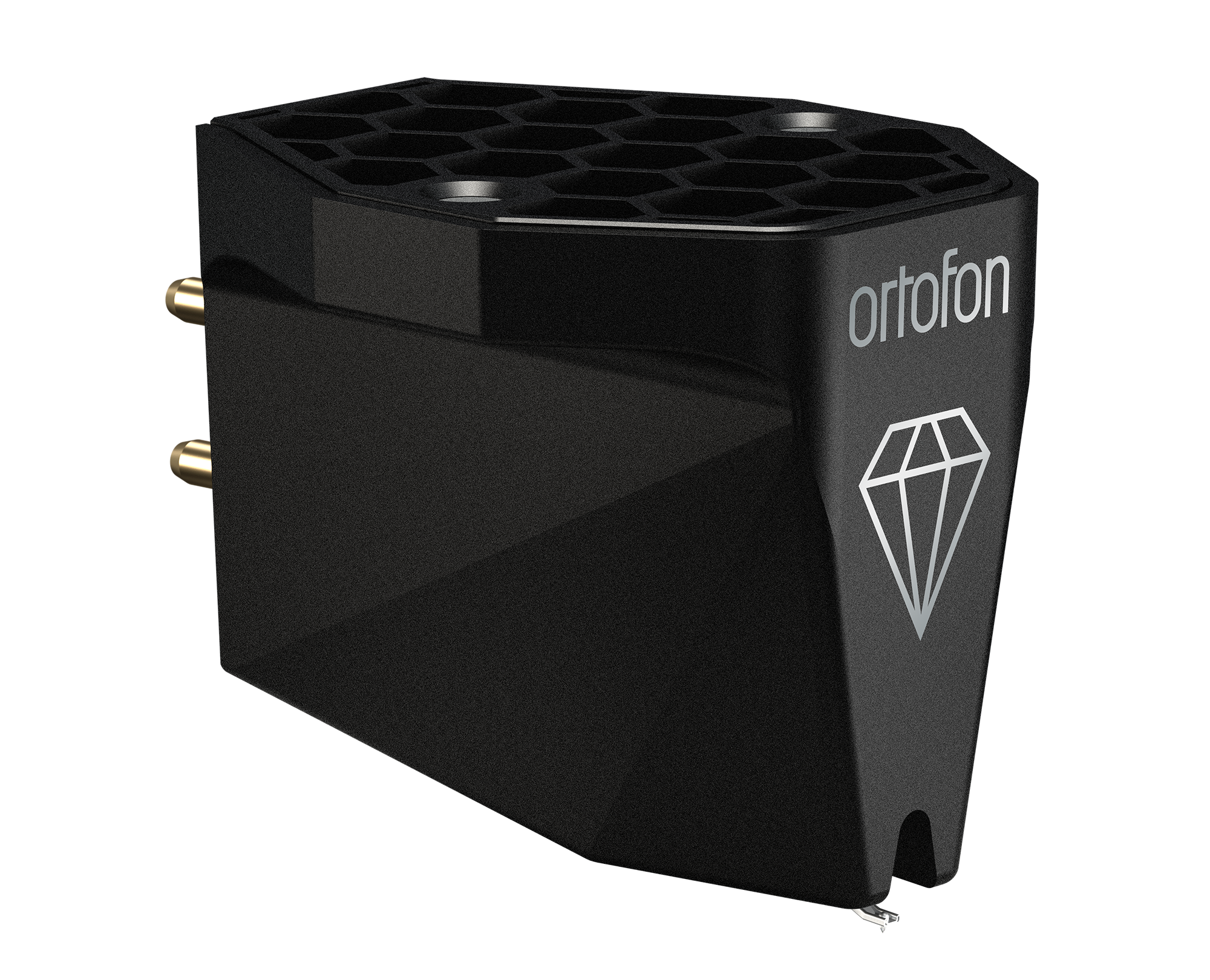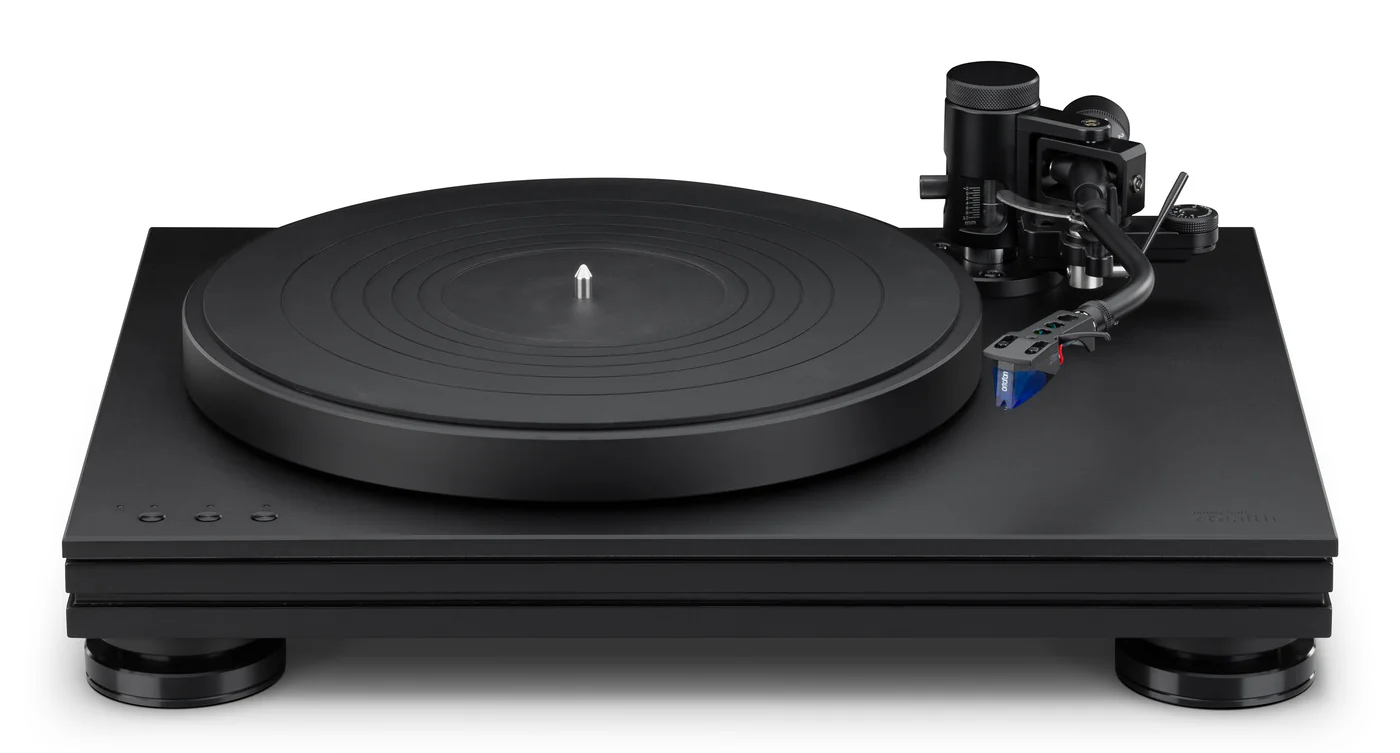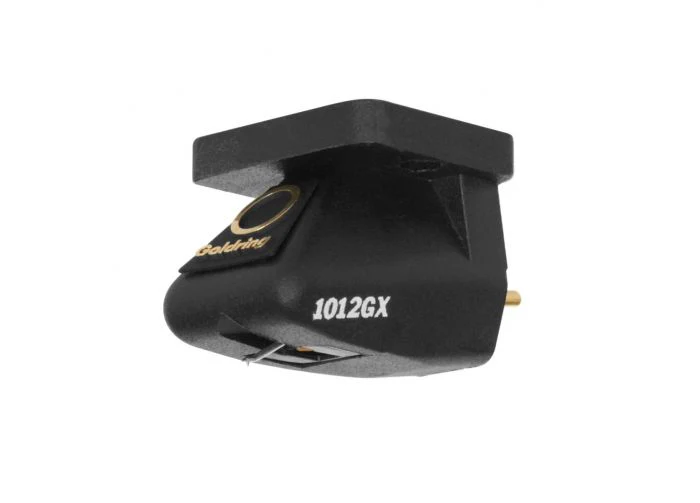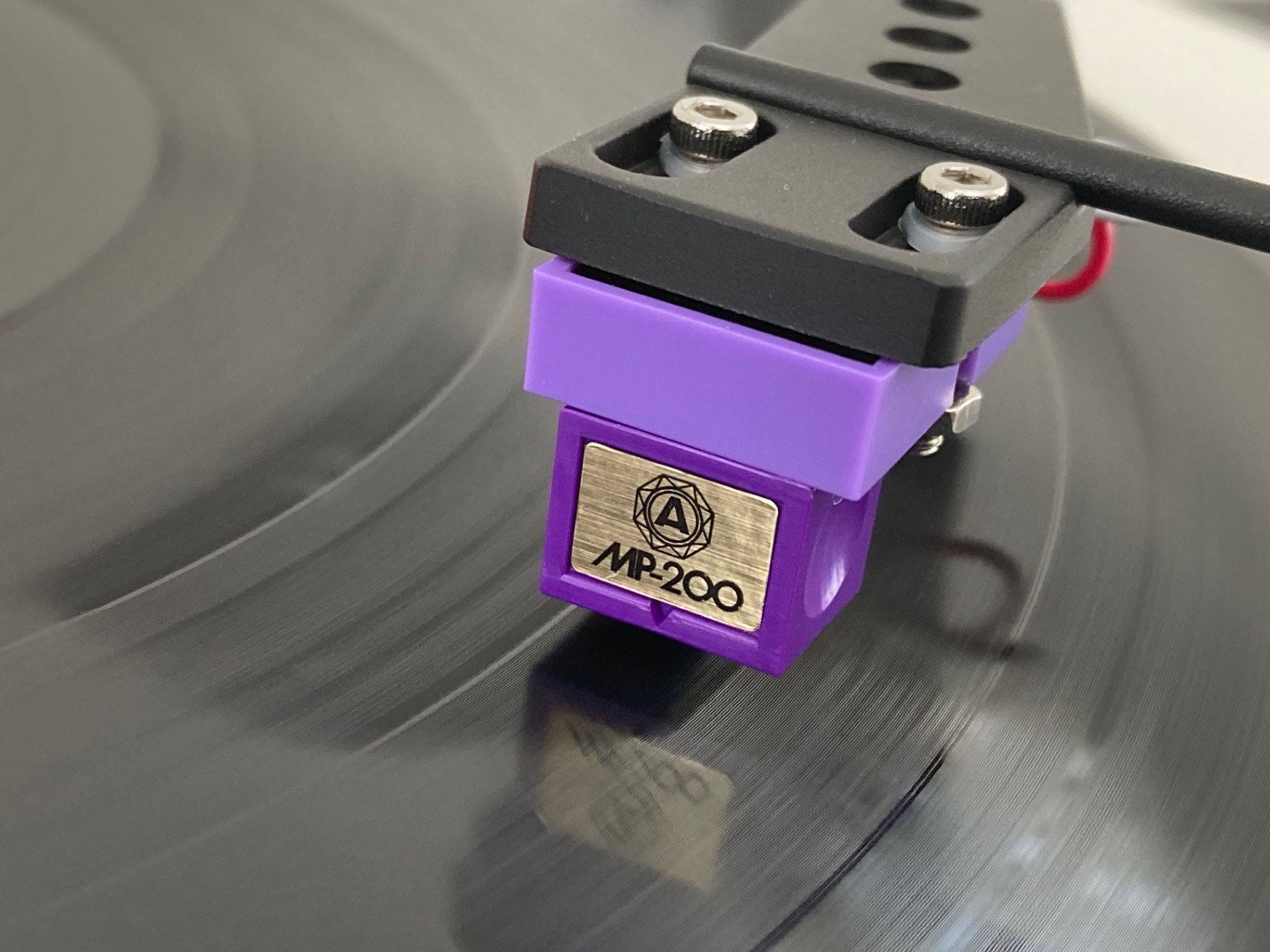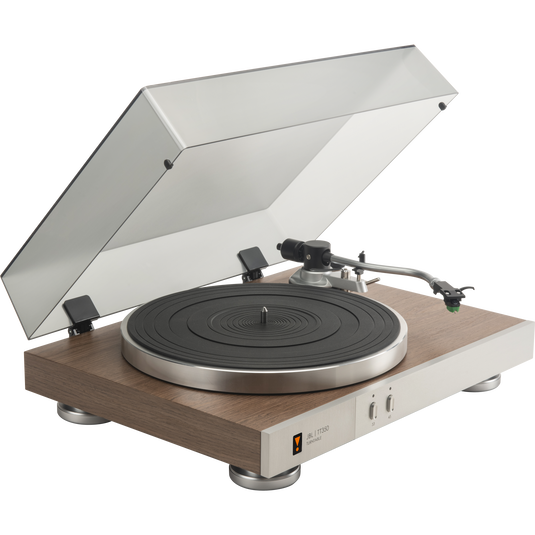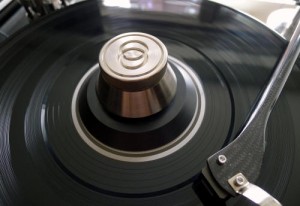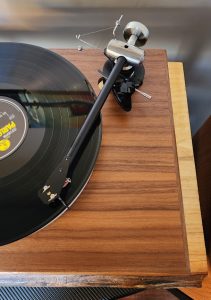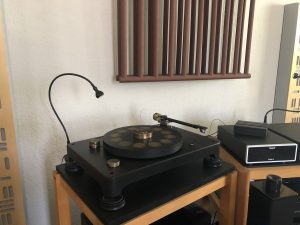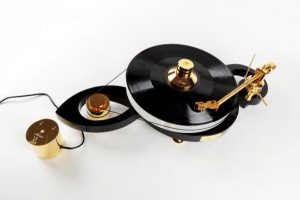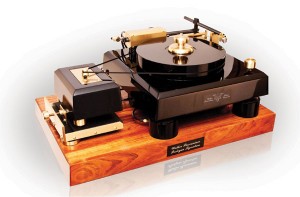Reboots are everywhere these days, and it's easy to understand why. Capitalizing on existing goodwill and warm nostalgia is a surefire strategy for attracting an instant audience. My generation especially is eating it up. I mean, come on, who isn't binge watching those over-the-hill karate kids Daniel LaRusso and Johnny Lawrence still trading kicks in their 50s?
Even the audio world is in on the act. The Klipsch Heritage line, comprising once-discontinued models like the Cornwall, is back on the company's front burners again. JBL's L100 Classic recently received a modern performance upgrade while retaining the retro looks we all remember so fondly from Maxell tape ads of old. I have no idea whether Technics intentionally power slid their IROC-Z down Retro Lane, but if ever there was a time to revive an icon like the 1200, it's now. Forty-somethings have entered our prime earning years, and are demonstrably willing to pay handsomely for products that our teenaged selves could only dream of affording.
Turntable geeks in both the DJ and music enthusiast communities mourned pretty heavily when the company exited the analog business in 2010, seemingly abandoning decades of rich heritage. That absence was relatively short lived, as the brand—backed by parent company Panasonic's considerable engineering clout—returned just six years later. Today, you can choose from a few thoroughly rethought interpretations of the classic 1200, starting with the SL-1200G for $3999, followed by the cut-price SL-1200GR sitting at a substantially more accessible $1699. The SL-1500C is a "plug and play" iteration minus the DJ features, but adding a built-in phono preamp and preinstalled Ortofon 2M Red cartridge, for $1199.
Bringing up the rear is the SL-1200MK7 at $999. Aimed squarely at DJs, it feels like the true spiritual successor of the original model in terms of both its price positioning and workhorse mission. It also shares enough similarities with pricier 1200 models that music lovers should find much to like. This actually appears to be a near mechanical twin to the 1500C where it counts, even though superficially it more closely resembles the 1200GR. Specifically, the MK7 seems to share the 1500C's arm, cabinet construction and motor (a slightly less sophisticated version of the GR's).
To be clear: the MK7 is entirely designed and built by Technics, not farmed out to OEM manufacturers like most of its competitors. This particular model is also sold through a separate network of mostly professional audio and musical instrument suppliers, so if you require the support and setup expertise of a HiFi specialist, you may need to look elsewhere in the Technics line.
While $999 is reasonable by today's standards, it's also a sticking point for me—only because, not long ago, you could pick up a brand new, original SL-1200MK2 for about $500. That was the HiFi equivalent of buying a Mercedes-Benz G-Wagen for less than a used Ford Fiesta. I know, because in 2004, I bought one and posted a review on Audiogon. The resulting comments ranged from "sounds as good or better than my $10,000 DAC" to "I don't agree that it sounds very good." My own conclusion landed somewhere in between.
While sound quality can be subjective, build quality is less so, and the old 1200 was a cast aluminum delight that oozed engineering precision and tactile refinement. The new MK7 is not quite that. It still looks and feels like a quality product, and well worth every penny of $999, but not a great deal more. I suppose bargains like the MK2 only come around once in a lifetime, and this is definitely a reboot on a budget. (For the record though, the MK7 is no lightweight; it weighs only a few num-chuks less than the $1699 SL-1200GR.)
Despite my sentimentality toward the MK2, first impressions of the MK7 were overwhelmingly positive. To begin, the unit was packaged extremely well and with obvious care. All of the parts arrived in flawless condition. The MK7 has a substantial feel, and its surfaces are rich looking and feeling, from the matte finish of the plinth to the precise-feeling, heavily rubber-damped platter. It also didn't smell like anything. Call me crazy, but cheap products built by firms with little sense of environmental responsibility is often accompanied by weird, sharp, acrid, or sour aromas because they're off-gassing God knows what. The MK7, at least according to my sniffer, seems responsibly built to high international standards.
Unpacking and assembly is a snap and can be accomplished in less than five minutes. You won't need the instruction manual at all if you've ever set up a turntable before. (The platter goes over the motor spindle, the counterweight slides onto the back of the tonearm, and the headshell attaches around front. It's not an ounce more complicated than that.) No cartridge is included, which is good since you won't be paying extra for a "free" starter model that you'll likely discard anyway.
Surprisingly, this new Technics actually has a few advantages over the old one. First of all, hallelujah, the power cord and interconnect are now detachable, which is a huge convenience not only for DJs, but also allows home users to upgrade both easily. The dust cover is no longer hinged, so it can be freely lifted off the unit and set aside without hassle. The addition of DIP switches under the platter allows owners to make useful customizations like defeating the reverse function for safety, personalizing torque and braking settings, and even changing the color of the control lighting.
Setup is as easy as the old MK2. The removable headshell makes mounting cartridges simple. Fine arm height adjustment is accomplished via a familiar, intuitive rotating arm collar. Oddly, Technics does not include their ubiquitous plastic overhang gauge, which probably costs mere pennies to make. That won't bother those who prefer a different cartridge alignment theory, but it's a strange omission at $1000. This being a DJ table, only a slipmat is included. I replaced it immediately with the Herbie's Audio Lab mat that worked so well on my MK2. The supplied power cord seemed fine, but I chucked the chintzy supplied interconnect in favor of cables from Audio Art and you should do the same using your preferred brand.
Eventually, I also swapped out the stock feet in favor of what you see in the previous pictures: homegrown, inexpensive isolation footers handmade by eBay seller Musicalfrog The Tech Junkie, which worked as claimed for $80. I can't say they made an audible improvement under normal listening, but they offer more compliance and travel than the stock feet, and more effectively isolated the table against footfalls in my second-floor perch. It should be noted that the stock feet are hardly mere hockey pucks; they incorporate a spring and rubber suspension arrangement that should be fine for most buyers.
I moved a Hana SH moving coil cartridge ($750) from my Avid Diva II to the Technics without missing a beat. While the Avid is four times the price, the Technics was hardly four times less competent. In fact, the MK7 offered a grippier, more tuneful performance albeit with much less subtlety, a little less air, and somewhat less nuance. The MK7 has a really fine tonearm for a sub-$1000 turntable, free of any obvious friction, with perfectly adjusted bearings, and the aura of a genuine instrument. I should also mention that other critical component, the drive system, performed flawlessly and spun at exactly the right speeds.
Swapping the Hana for a Dynavector 10x5 ($750; discontinued but replaced by an improved MkII version) resulted in a slight loss of sophistication and spaciousness that made the Technics sound substantially more expensive than it is. But the Dynavector upped the fun quotient considerably, trading off a loss of finer detail and texture for a more exciting presentation, greater dynamics, and a more electric nature. Drum beats in particular hit with kick-to-the-ribcage visceral impact. Both the Hana and Dynavector work very well on the Technics, and choosing one over the other is a tough call, though the Hana did sound better in a heavier, costlier headshell than the one supplied with the MK7.
It used to be I could instantly spot a direct drive table by one or more telltale signs. Surface noise and imperfections tended to be more pronounced than on belt drives. The sound was generally more forward, and less round. Treble could sometimes lean toward "bitey." Absolutely none of that is true with the MK7. It's quiet, cohesive, and gives a balanced, incisive, unveiled performance. The direct vs. belt drive debate simply doesn't apply here.
How does it sound compared to the original MK2? Though I no longer have one on hand, I have my written notes and recollections. And I have to admit...I think the MK7 is likely much better. While the original had great attack, rhythm, and drive, it could sound a bit dark and recessed in the midrange. This one doesn't. It's natural, more open, transparent, and reasonably airy. While the original didn't have the most spacious soundstage, this one is wide and deep for the money. It does all that while retaining the MK2's propulsive dynamics and extended, layered bottom end. I guess I shouldn't sound surprised. The MK2 was a product of 1970s engineering, and Technics/Panasonic have learned a lot since the halcyon days of leisure suits and Pet Rocks.
Ease of use continues as an important factor in the 1200's favor. Compared to belt drives that take time to get up to speed, one tap and the Technics is ready to play. Changing speeds is done at the touch of a button rather than removing the platter and switching a belt's position on the motor pulley. Speed is dead on, and will stay that way, unlike the gradual degradation of a rubber belt as it ages. Swapping cartridges already mounted on their own headshells takes only a couple minutes, especially if you've written down the correct arm height setting so it can be quickly dialed back in.
I can think of only two minor criticisms, neither of which affect the sound. The rubber blanks on the rear of the dust cover that mask where hinges would normally go kept falling off; a penny's worth of double stick tape solved that. Also, the platter exhibited a teeny, tiny wobble, and I mean tiny. Given the otherwise commendable quality control, I have little doubt it's fully within spec and simply a normal allowable variation.
In the final analysis, the SL-1200MK7 isn't a straightforward continuation of the 1200 heritage, but rather, a new thing entirely. Technics pared their standard-setting concept down to its bare essentials, re-sculpting it from the ground up using better sounding parts to great effect. Despite being packaged and promoted for DJs, I think it makes even more sense for home users who are game to trade some bling for purist performance at an appealing price. The reworked drive system and tonearm in particular are outstanding, while the chassis construction and overall appearance are way more than good enough. If the classic retro style adds to its appeal, so much the better.
It appears Technics engineers deftly hit their cost targets while compromising precious little on the pieces that matter most. The result is a $1000 turntable (technically, $999.99) that performs, in some important ways, like one that's priced two or even three times more. Treat it like an audiophile deck rather than a DJ spinner, and it'll reward you accordingly. This is a must audition, provided you can locate a willing dealer, for anyone buying a turntable under $2000, even if only to help calibrate your compass. It's also my no-brainer default pick below $1000. Enthusiastically recommended. The MK7 is a rare reboot that crane kicks the original—and also stands tall on its own merits.
Specifications
Turntable section
- Type: Direct Drive Manual Turntable
- Turntable Speeds: 33-1/3, 45 rpm (with switch 78 rpm)
- Starting Torque: 0.18 N・m / 1.8 kg・cm
- Build-up Characteristics: 0.7 s. from standstill to 33 1/3 rpm
- Wow And Flutter: 0.025% W.R.M.S.
- Turntable Platter: Aluminum diecast
- Diameter: 332 mm (13-5/64 inch)
- Weight: Approx. 1.8 kg (4.0 lbs) (including slipmat and slipsheet)
Tonearm section
- Type: Universal Static Balance
- Effective Length: 230 mm (9-1/16")
- Overhang: 15 mm (19/32")
- Tracking Error Angle: Within 2° 32' (at the outer groove of 30 cm (12") record), Within 0° 32' (at the inner groove of 30 cm (12") record)
- Offset: Angle 22°
- Arm-height Adjustment Range: 0 - 6 mm
- Stylus Pressure Adjustment Range: 0 - 4 g (Direct Reading)
- Head Shell Weight: Approx. 7.6 g
- Applicable Cartridge Weight Range (without auxiliary weight): 5.6 - 12.0 g or 14.3 - 20.7 g (including head shell)
- Head Shell Terminal Lug: 1.2 mmφ 4-pin terminal lug
- Terminals: Audio Output PHONO (Pin Jack) x 1 EARTH TERMINAL x 1
General
- Power Supply: AC 110-240 V, 60 Hz
- Power Consumption: 8 W, Approx. 0.2 W (Standby)
- Dimensions: (W x H x D) 453 x 169 x 353 mm 17-27/32 × 6-21/32 × 13-29/32 inch
- Weight: Approx. 9.6 kg / 21.2 lbs
- Accessories: Slipmat, Slipsheet, Dust cover, EP record adaptor, Balance weight, headshell, Screw set for cartridge, PHONO cable, PHONO earth lead, AC power supply cord, Owner's Manual
SL-1200MK7 Turntable
Retail: $999.99
Technics US, Panasonic Corporation of North America
Two Riverfront Plaza
Newark, NJ 07102-5490
800.344.2112




